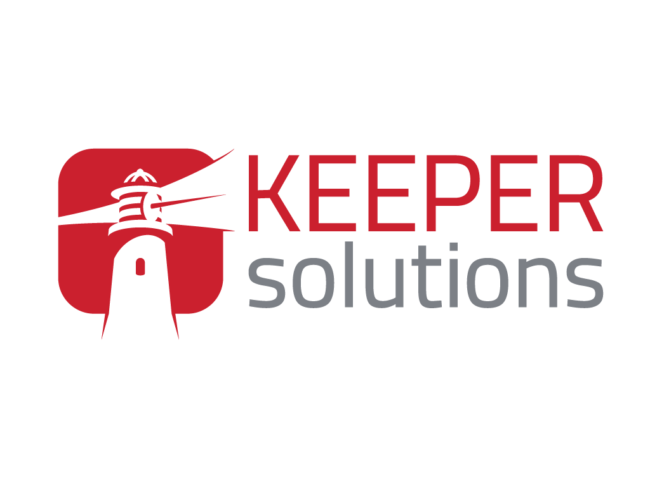How to Choose the Right Software Development Partner?
How to choose the right software development partner or find the right software outsourcing solution? In this blog post we provide an 8-step approach.
One of the main blockers stopping companies from reaching their goals in 2022 is an inability to scale resources. Competition for talent is at an all-time high. The shortage of developers in particular is one of the most common bottlenecks for global market players. In fact, the leaders of Fortune 500 companies view the talent shortage as the number one threat to business. This is according to a Fortune 500 CEO survey. The desire, ambition and innovation is there. But organizations are being held back because they can’t build the team and software capabilities that are required to drive growth.
Competition is even more intense amongst funded start-ups. According to Robert Half’s Demand for Tech Talent report, more than half (54%) of start-up businesses who have secured private equity or venture capital funding in the past 12 months invested capital in tech recruitment. It’s no surprise then that software development outsourcing is expected to grow by 70% by 2023. (Talent shortage is just one reason that companies are choosing to outsource, discover some of the other reasons here.)
Deciding to outsource your software development needs is one thing but choosing the right partner is what’s really important. An ill-suited partnership can lead to further frustration, breakdowns in communication, loss of revenue, and, ultimately, an organization not meeting its objectives. In this blog post, we outline how to choose the right software development partner in eight key steps.

1. Develop Clarity Around What You’re Building And Your Needs
Before you even consider an outsourced software development partnership, it is imperative that you understand what you want and assess your motives. At Keeper Solutions, we have a simple set of questions that you need to ask yourself before deciding if software outsourcing is right for you.
-
-
-
-
-
-
-
-
-
- Are you comfortable with the prospect of working with a third-party team? Do you trust the process and believe that it will be suitable for your company? Is your organization compatible? If not, it might be time to reassess your options.
- Does your executive leadership team support software development outsourcing as a high-priority strategy? If you do not have buy-in from key stakeholders, it will be very difficult for an outsourcing partnership to work, whether it be nearshore or otherwise.
- Do you have an operational team that is aligned to an outsourcing partnership? It is important that in-house product owners, project managers, software development managers, and business analysts are fully invested in the outsourcing partnership.
- Do you have buy-in from the in-house team? Outsourcing is an alternative strategy to building an in-house team but it can also be complementary. However, it’s vital that members of your in-house team feel empowered and not under threat.
-
-
-
-
-
-
-
-
2. Choose an Engagement Model
When choosing an outsourcing partner, there are three main engagement models to choose from – nearshoring, off-shoring and on-shoring. The difference between these models mainly has to do with the location of your software outsourcing team and what time zone they occupy.
Software on-shoring is a type of domestic software development outsourcing. It involves outsourcing software development projects to another location within the national borders. With nearshoring, teams are located within 1-4 hour time zones, while offshoring refers to outsourcing to far-away countries with considerable time zone differences.
The importance of this step is sometimes overestimated but it is something that you need to consider nonetheless. Often too much emphasis is placed on real-time communication but it all depends on your requirements and working habits. While it shouldn’t make or break your decision-making process it’s important to fully understand your needs and what model might suit best.
-
-
-
-
-
-
-
-
-
- Do you understand what you need from an outsourcing partner?
- Is real-time communication a necessity?
- Is it important to work with a team that is in close proximity and shares a similar time-zone?
- How do you plan on working with your outsourced team?
-
-
-
-
-
-
-
-
Learn more about the different engagement models here.

3. Create a Shortlist of Suitable Software Outsourcing Partners
Once you have decided if outsourcing is right for you and have considered the engagement models, it is time to create a list of candidates. Do your research. Look at sites such as Clutch.co, Angel.co and GoodFirms.co for a curated list of potential partners but also talk to friends, clients and industry colleagues who have engaged with software development outsourcing partners in the past. Look for social proof, reviews and ratings online before finalizing your shortlist.
4. Do Your Research
After you’ve created your initial list of potential partners, it is time to carry out some more in-depth research. Below are some of the things to look out for:
-
-
-
-
-
-
-
-
-
- Check the company’s portfolio/case studies and testimonials. If you have a mutual connection with someone they’ve worked with in the past, it would be a good idea to reach out and have a frank discussion about their values and working habits. While there are dozens of metrics to consider, a company’s track record should be upweighted.
- Check the tools, technologies and working methodologies they use to see if they align with your own. If possible, see what tools they use to communicate with clients.
- Consider the geographic location and services they offer.
-
-
-
-
-
-
-
-

5. Find Evidence of Relevant Industry/Domain Expertise
When looking through case studies, testimonials and customer base, look for companies whose needs and objectives match your own. Industry experience is incredibly important and can significantly improve the integration process. A service provider that understands the complexities of your tech stack as well as the regulatory and compliance requirements of your marketplace, holds a significant advantage over other partners. Talk to the company directly and find out about their domain expertise. Get a list of relevant companies they’ve worked with in the past and talk to them.
6. Don’t Overlook the Importance of Cultural Alignment
One success factor that is so often overlooked but is critically important is cultural alignment. No matter the team, whether it be a fully in-house, remote or hybrid, can only succeed when they work together and there is an alignment of values, behaviors, objectives and working practices.
Our advice is to take a long look at the culture of any organization you are considering working with. It can be difficult to fully understand a company’s culture before working with them. However, talking to senior management and finding out more about how they operate can provide some insight. Below are some questions to consider:
-
-
-
-
-
-
-
-
-
- Do you share the same values?
- How do you each deal with adversity?
- What are your collective work habits and expectations?
- What is the company’s vision? Does it align with your own?
- What kind of working environment do senior management try to create?
-
-
-
-
-
-
-
-
More on the importance of cultural alignment can be found here.

7. Consider Advisory and Consultancy Capacity
When selecting a partner, it’s important to consider their ability to provide support and guidance on software development projects. Higher-value providers can offer expert advice on engagement-models (rightsourcing), product design/UX, technical architecture, test strategy & automation, and industry compliance requirements. Seeking partners that provide high-level advisory support facilitates rapid knowledge transfer in the early stages. This will reduce the risk in the engagement and foster mutual trust early on.
8. Choose the Best Fit and Focus on Building Long-term Relationships
Once you have completed all the steps, it is time to choose an outsourced development partner. How you make your pick is really up to you. Many companies use scoring matrices in their decision-making process, which can be effective. It’s difficult to provide guidance on the best method for choosing a partner. However, our one piece of advice is to think long-term.
Working with an outsourced software development partner is not like engaging with a recruitment company or head-hunter. It shouldn’t be looked at as a one-off transaction but a strategic partnership. When chosen correctly, your outsourced software development partner should feel like an extension of your own team. With any strategic partnership, it’s vital to find the right fit and think long-term.
Want to learn more? Talk to one of our team.



